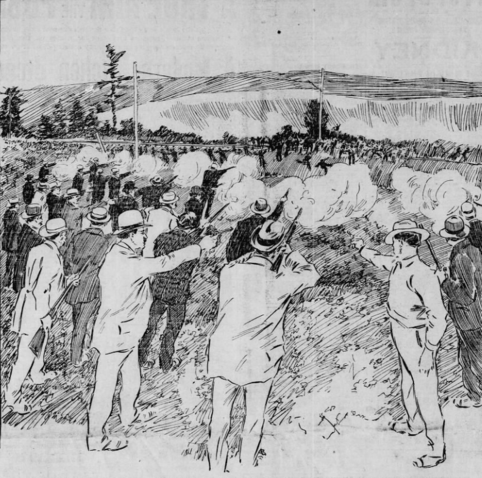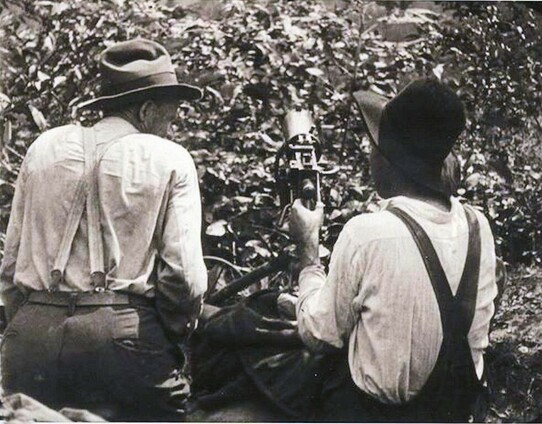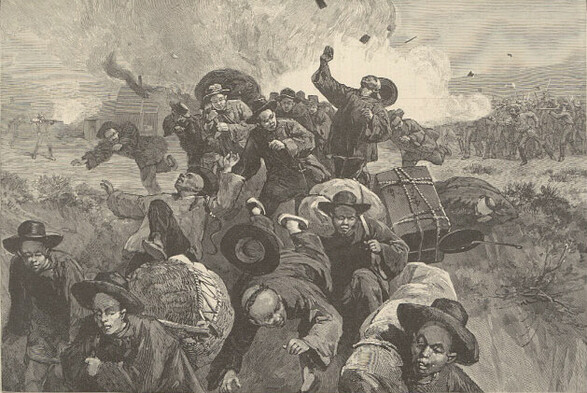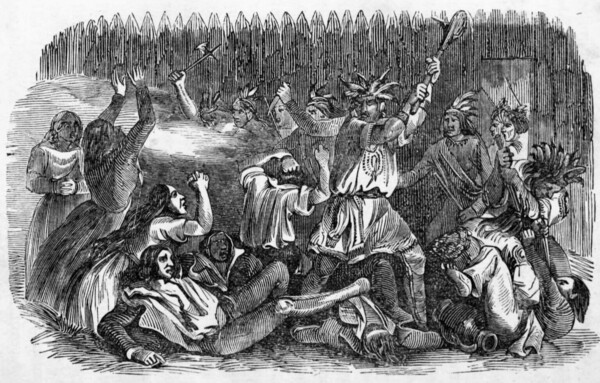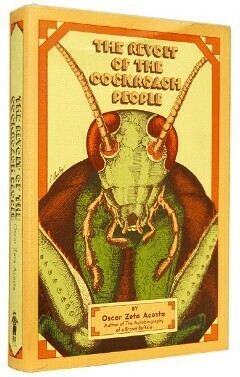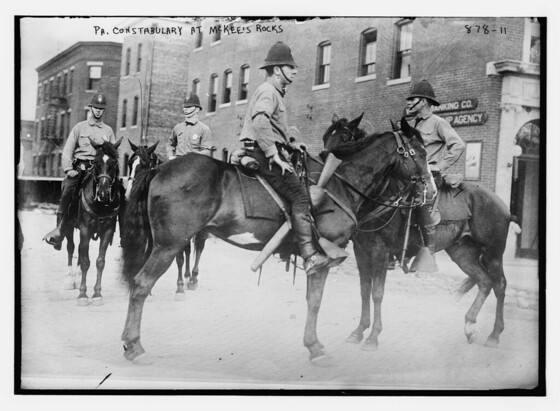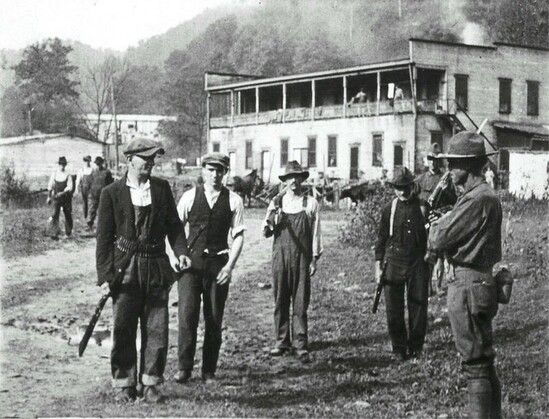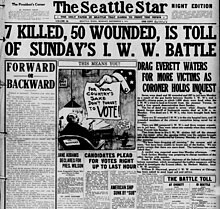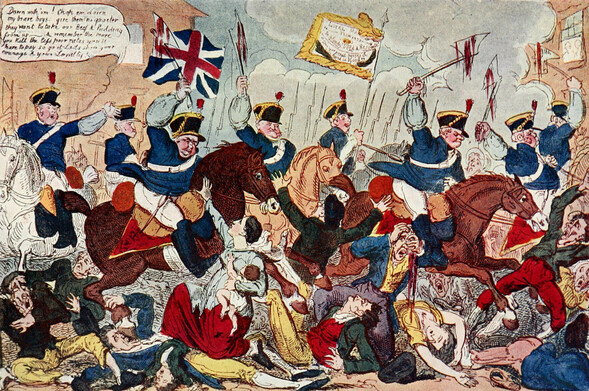MikeDunnAuthor · @MikeDunnAuthor
1936 followers · 4161 posts · Server kolektiva.socialToday in Labor History September 10, 1897: A sheriff and deputies killed 19 striking miners and wounded 40 others in Lattimer mine, near Hazelton, Pennsylvania during a peaceful mining protest. Many of those killed were originally brought in as strikebreakers, but then later organized and joined the strike. The miners were mostly Polish, Lithuanian, Slovak and German. The massacre was a turning point for the UMW. Working and safety conditions were terrible. 32,000 miners had died from 1870-1897, just in the northeastern coalfields of Pennsylvania. Wages had dropped 17% since the mid-1890s.
The strike began in mid-August, when teenage mule drivers walked off the job to protest the consolidation of stables, which had forced them to walk much further just to get to work. After a scuffle between drivers and supervisors, two thousand men walked out, as well. Soon, all the mines in the region had joined the strike. Most of the men who weren’t already members of the UMW quickly joined the union. Up to 10,000 miners were now on strike. The mine owners’ private police, known as the Coal & Iron Police (miners called them Cossacks, for their brutality), was too small to quash the strike, so they called on the sheriff to intervene. He mustered a posse of 100 Irish and English immigrants, who confronted the miners as they marched toward Latimer, on Sep 10. Along the way, they joked about how many miners they were going to kill.
The massacre provoked a near uprising. The sheriff called for the deployment of the National Guard, which sent 2,500 troops to quell the unrest. 10 days later, a group of Slavic women, armed with fire pokers and rolling pins, led 150 men and boys to shut down the McAdoo coal works, but were stopped by the National Guards. The sheriff, and 73 deputized vigilantes, were put on trial. However, despite evidence clearly showing that most of the miners had been shot in the back, and none had been armed, they were all acquitted.
#WorkingClass #LaborHistory #coal #mining #union #strike #latimer #massacre #police #PoliceBrutality #PoliceMurder #immigration
#workingclass #LaborHistory #coal #mining #union #strike #latimer #massacre #police #policebrutality #policemurder #immigration
Music News Feed · @music_news_feed
35 followers · 3594 posts · Server room19.comDo Not Talk To MASSACRE About Their 1996 Album Promise #2023_09_10 #metal_injection #greg_kennelty #latest_news #massacre
>> https://metalinjection.net/news/do-not-talk-to-massacre-about-their-1996-album-promise
#2023_09_10 #metal_injection #greg_kennelty #latest_news #massacre
damian entwistle · @ukdamo
59 followers · 510 posts · Server mastodon.org.ukToday's photo with the most hits: the memorial centra at Oradour sur Glane.
#OradourSurGlane #MemorialCentre #massacre #WWII #SS #destroyed village
#oradoursurglane #memorialcentre #massacre #wwii #ss #destroyed
damian entwistle · @ukdamo
59 followers · 510 posts · Server mastodon.org.ukOradour
- by Jean Tardieu
https://www.tumblr.com/ukdamo/727445060532289536/oradour?source=share
#OradourSurGlane #massacre #SS #WWII #Limousin #France #village #WarCrime #JeanTardieu
#massacre #ss #wwii #limousin #france #village #jeantardieu #oradoursurglane #warcrime
MikeDunnAuthor · @MikeDunnAuthor
1901 followers · 4062 posts · Server kolektiva.socialToday in Labor History September 2, 1921: The Battle of Blair Mountain ended on this date in 1921, with the U.S. government bombing striking coal miners by plane, the second time the U.S. government used planes to bomb its own citizens (the first was in the Tulsa riots, earlier that year). The Battle of Blair Mountain was one of the largest civil uprisings in U.S. history and the largest armed insurrection since the Civil War. The uprising lasted 5 days and involved 10,000-15,000 coal miners confronting an army of scabs and police. The battle came as mine owners tried to crush attempts by coal miners to unionize the southwestern West Virginia coalfields. From the late 1800s, mine owners forced workers to live in company towns, where rent was deducted from their wages and they were paid in scrip, which was accepted only at the overpriced company stores and was worthless everywhere else. The work was very dangerous and safety equipment and precautions were minimal. The mine owners had a long tradition of using private detectives and goons to spy on workers, infiltrate their meetings, rough them up, and block any attempts to unionize. The battle began after Sheriff Sid Hatfield (an ally of the miners and hero from the Battle of Matewan) was assassinated by Baldwin-Felts agents. Much of the region was still under martial law as a result of the Battle of Matewan. Miners began to leave the mountains armed and ready for battle. Mother Jones tried to dissuade them from marching into Logan and Mingo Counties, fearing a bloodbath. Many accused her of losing her nerve. The miners ignored her and a battle ensued between miners and cops, private detectives, scabs and eventually the U.S. military.
#WorkingClass #LaborHistory #coal #mining #strike #union #BlairMountain #WestVirginia #matewan #police #PoliceBrutality #massacre #PoliceMurder #Riot #MotherJones
#workingclass #LaborHistory #coal #mining #strike #union #blairmountain #westvirginia #matewan #police #policebrutality #massacre #policemurder #Riot #motherjones
MikeDunnAuthor · @MikeDunnAuthor
1901 followers · 4061 posts · Server kolektiva.socialToday in Labor History September 2, 1885: 150 white miners, who were struggling to unionize for better wages and work conditions, attacked their Chinese fellow workers in the Rock Springs massacre in Wyoming. As a result, they killed 28 Chinese miners, wounded 15 others and forced all the other Chinese to flee town. By the time the federal troops arrived, there were no surviving Chinese people left in town.
#WorkingClass #LaborHistory #strike #massacre #racism #AntiAsianHate #chinese #immigration #mining #Wyoming #union
#workingclass #LaborHistory #strike #massacre #racism #AntiAsianHate #chinese #immigration #mining #Wyoming #union
MikeDunnAuthor · @MikeDunnAuthor
1899 followers · 4032 posts · Server kolektiva.socialToday in Labor History August 31, 1798: Irish rebels, with French assistance, established the short-lived Republic of Connacht during the Irish Rebellion of 1798. On September 8, 1798, just weeks after its proclamation, the British army defeated the new Republic at the Battle of Ballinamuck. The British army then spread out into the rebel-held Province of Connacht, slaughtering people and burning villages. And they hunted down and hanged with many of the rebel leaders.
#WorkingClass #LaborHistory #ireland #Revolution #rebellion #colonialism #massacre
#workingclass #LaborHistory #ireland #Revolution #rebellion #colonialism #massacre
MikeDunnAuthor · @MikeDunnAuthor
1894 followers · 4022 posts · Server kolektiva.socialToday in Labor History August 30, 1813: The Fort Mims massacre took place during the Creek War. The Red Sticks faction of the Creek Nation, under the command of head warriors Peter McQueen and William Weatherford, stormed Fort Mims and defeated the militia garrison. Afterward, they massacred nearly all the remaining Creek métis, white settlers, and militia at the fort. Their victory spread panic throughout the Southeast. Settlers fled. Thousands of whites fled their settlements for Mobile, which struggled to accommodate them. The Red Stick victory was one of the greatest Native American victories. They were facilitated by the fact that Federal troops were bogged down at the northern front of the War of 1812. However, local state militias, commanded by Major General Andrew Jackson and allied with Cherokees, ultimately defeated the Red Sticks Creek faction at the Battle of Horseshoe Bend, ending the Creek War.
The Fort Mims massacre is cited in Gone with the Wind, by Margaret Mitchell. Grandma Fontaine shares her memories of seeing her entire family murdered in the Creek uprising following the massacre as a lesson to Scarlett.
#WorkingClass #LaborHistory #NativeAmerican #indigenous #CreekNation #massacre #mobile #alabama #fiction #novel #writer #author #books @bookstadon
#workingclass #LaborHistory #nativeamerican #indigenous #creeknation #massacre #mobile #alabama #fiction #novel #writer #author #books
MikeDunnAuthor · @MikeDunnAuthor
1888 followers · 4014 posts · Server kolektiva.socialToday in Labor History August 29, 1970: LAPD brutally attacked 10,000 Chicano antiwar demonstrators, killing three, including journalist Ruben Salazar. The attack led to a week of rioting. Salazar was portrayed under the name "Roland Zanzibar" in Oscar Zeta Acosta's 1973 novel “The Revolt of the Cockroach People.” Oscar Zeta Acosta, himself, was portrayed in Hunter S. Thompson’s “Fear and Loathing in Las Vegas,” as his “Samoan attorney.” Salazar wrote for the L.A. Times and was the first mainstream journalist to cover the Chicano community. He covered the 1965 U.S. occupation of the Dominican Republican, as well as the 1968 Tlatelolco Massacre in Mexico City. He often wrote critically about how the local L.A. government treated Chicano people, particularly during and after the school walkouts.
#WorkingClass #LaborHistory #chicano #antiwar #RubenSalazar #LosAngeles #tlatelolco #MexicoCity #massacre #vietnam #journalism #books #writer #author #fiction @bookstadon
#workingclass #LaborHistory #chicano #antiwar #RubenSalazar #losangeles #tlatelolco #mexicocity #massacre #vietnam #journalism #books #writer #author #fiction
anna_lillith 🇺🇦🌱🐖 · @anna_lillith
2521 followers · 15217 posts · Server mas.toDid any of these gestures make a difference? It made a difference to me. This was my wild promise that became a vow I made to the lone Utah prairie dog who survived my family’s #massacre.
What is the difference between a promise and a vow? A promise is “a specific declaration or assurance that one will do a particular thing or that a particular thing will happen.” A vow is “a solemn promise” — a deepening gesture that one makes with one’s whole being.
6/11
Paranormal-Activity · @paranormalactivity
0 followers · 121 posts · Server masto.nuAugust 24, 1572 - Saint Bartholomew's Day #Massacre #history https://activite-paranormale.net/event/read/178/saint-bartholomew-s-day-massacre
MikeDunnAuthor · @MikeDunnAuthor
1861 followers · 3960 posts · Server kolektiva.socialToday in Labor History August 23, 1909: IWW strikers boarded a streetcar in McKees Rock, Pennsylvania looking for scabs, during the Pressed Streetcar Strike, in the Mckees Rock borough of Pittsburgh. A deputy sheriff shot at them and was killed in the return fire. A gun battle ensued that killed 12-26 workers. IWW cofounder, William Trautman, led the Wobbly contingent during the strike. He later wrote a novel, “Riot,” based on the strike. After the authorities arrested Trautman during the strike, Big Bill Haywood and Joe Ettor came to organize the strikers.
Pressed Streetcar employed 6,000 people, mostly immigrant, from 16 different ethnic backgrounds. It was the second largest streetcar manufacturer in the country. Working conditions were horrendous, even by Pittsburgh standards. Locals referred to it as the slaughterhouse. The local coroner estimated that workers were dying at a rate of one per day, mostly by cranes. Slavic immigrants complained that company officials forced their wives and daughters to perform sexual favors in exchange for debts owed to the company for food and rent.
#WorkingClass #LaborHistory #strike #union #IWW #pittsburgh #riot #massacre #police #PoliceBrutality #PoliceMurder #BigBillHaywood #immigration #books #author #writer @bookstadon
#workingclass #LaborHistory #strike #union #IWW #pittsburgh #Riot #massacre #police #policebrutality #policemurder #bigbillhaywood #immigration #books #author #writer
MikeDunnAuthor · @MikeDunnAuthor
1861 followers · 3951 posts · Server kolektiva.socialOver the past year, Saudi border guards have slaughtered hundreds of migrants in cold blood, mostly women and children fleeing famine in Ethiopia.
https://www.hrw.org/news/2023/08/21/saudi-arabia-mass-killings-migrants-yemen-border
#WorkingClass #LaborHistory #massacre #immigration #SaudiArabia #CrimeAgainstHumanity #ethiopia #women #children
#workingclass #LaborHistory #massacre #immigration #saudiarabia #crimeagainsthumanity #ethiopia #women #children
MikeDunnAuthor · @MikeDunnAuthor
1860 followers · 3949 posts · Server kolektiva.socialToday in Labor History August 22, 1917: Italian police opened fire on protesters against the hunger caused by World War I. Most of the protesters were women. The next day, workers declared a General Strike. On the 24th, a state of siege was declared, but the strike continued until the 26th. Police violence during the strike resulted in the deaths of 60 people.
#WorkingClass #LaborHistory #italy #WorldWar1 #massacre #hunger #famine #protest #GeneralStrike #women #police #PoliceMurder #PoliceBrutality
#workingclass #LaborHistory #italy #worldwar1 #massacre #hunger #famine #protest #generalstrike #women #police #policemurder #policebrutality
MikeDunnAuthor · @MikeDunnAuthor
1850 followers · 3937 posts · Server kolektiva.socialToday in Labor History August 21, 1920: Ongoing violence by coal operators and their paid goons in the southern coalfields of West Virginia led to a three-hour gun battle between striking miners and guards that left six dead. 500 Federal troops were sent in not only to quell the fighting, but to ensure that scabs were able to get to and from the mines. A General Strike was threatened if the troops did not cease their strikebreaking activities. This was just 3 months after the Matewan Massacre, in which the miners drove out the seemingly invincible Baldwin-Felts private police force, with the help of their ally, Sheriff Sid Hatfield. 1 year later, Sheriff Hatfield was gunned down on the steps of the courthouse by surviving members of the Baldwin-Felts Agency. News spread and miners began arming themselves, leading to the Battle of Blair Mountain, the largest armed insurrection since the Civil War and the largest labor uprising in U.S. history. Over 100 people were killed in the 5-day battle, including 3 army soldiers and up to 20 Baldwin-Felts detectives. Nearly 1,000 people were arrested. 1 million rounds were fired. And the government dropped bombs from aircraft on the miners, only the second time in history that the government bombed its own citizens (the first being the pogrom against African American residents of Tulsa, during the so-called Tulsa Riots).
The Battle of Blair Mountain is depicted in Storming Heaven (Denise Giardina, 1987), Blair Mountain (Jonathan Lynn, 2006), and Carla Rising (Topper Sherwood, 2015). And the Matewan Massacre is brilliantly portrayed in John Sayles’s film, “Matewan.”
#WorkingClass #LaborHistory #mining #strike #union #WestVirginia #matewan #BattleOfBlairMountain #uprising #CivilWar #GeneralStrike #tulsa #massacre #racism #books #fiction #film #writer #author #novel @bookstadon
#workingclass #LaborHistory #mining #strike #union #westvirginia #matewan #battleofblairmountain #uprising #civilwar #generalstrike #tulsa #massacre #racism #books #fiction #film #writer #author #novel
David Phd · @cmsdengl
819 followers · 4184 posts · Server mas.toAnother reason why Sunak must not meet the Saudi Leader #saudiarabia #massacre #yemen https://www.bbc.co.uk/news/world-middle-east-66545787
MikeDunnAuthor · @MikeDunnAuthor
1847 followers · 3921 posts · Server kolektiva.socialToday in Labor History August 19, 1916: Strikebreakers attacked and beat picketing IWW strikers in Everett, Washington. The police refused to intervene, claiming it was federal jurisdiction. However, when the strikers retaliated, they arrested the strikers. Vigilante attacks on IWW picketers and speakers escalated and continued for months. In October, vigilantes forced many of the strikers to run a gauntlet, violently beating them in the process. The brutality culminated in the Everett massacre on November 5, when Wobblies (IWW members) sailed over from Seattle to support the strikers. The sheriff called out to them as they docked, “Who is your leader?” And the Wobblies yelled back, “We all are!” The sheriff told them they couldn’t dock. One of the Wobblies said, “Like hell we can’t!” And then a mob of over 200 vigilantes opened fire on them. As a result, seven died and 50 were wounded. John Dos Passos portrays these events in his USA Trilogy.
#WorkingClass #LaborHistory #IWW #union #strike #washington #vigilante #massacre #PoliceBrutality #police #fiction #HistoricalFiction #novel #writer #books #author #DosPassos @bookstadon
#workingclass #LaborHistory #IWW #union #strike #washington #vigilante #massacre #policebrutality #police #fiction #historicalfiction #novel #writer #books #author #dospassos
MikeDunnAuthor · @MikeDunnAuthor
1844 followers · 3902 posts · Server kolektiva.socialToday in Labor History August 16, 1819: Police attacked unemployed workers demonstrating in St. Peter's Field, Manchester, England. When the cavalry charged, at least 18 people died and over 600 were injured. The event became know as the Peterloo Massacre, named for the Battle of Waterloo, where many of the massacre victims had fought just four years earlier. Following the Napoleonic Wars there was an acute economic slump, terrible unemployment and crop failures, all worsened by the Corn Laws, which kept bread prices high. Only 11% of adult males had the vote. Radical reformers tried to mobilize the masses to force the government to back down. The movement was particularly strong in the north-west, where the Manchester Patriotic Union organized the mass rally for Peter’s Field. As soon as the meeting began, local magistrates tried to arrest working class radical, Henry Hunt, and several others. Hunt inspired the Chartist movement, which came shortly after Peterloo.
John Lees, who later died from wounds he received at the massacre, had been present at the Battle of Waterloo. Before his death, he said that he had never been in such danger as at Peterloo: "At Waterloo there was man to man but there it was downright murder." In the wake of the massacre, the government passed the Six Acts, to suppress any further attempts at radical reform. The event also led indirectly to the founding of the Manchester Guardian newspaper.
Percy Bysshe Shelley wrote about the massacre in his poem, “The Masque of Anarchy.” The authorities censored it until 1832, ten years after his death. Mike Leigh’s 2018 film Peterloo is an excellent portrayal of the massacre, and the events leading up to it. Many writers have written novels about Peterloo, including the relatively recent “Song of Peterloo,” by Carolyn O'Brien, and “All the People,” Jeff Kaye. However, perhaps the most important is Isabella Banks's 1876 novel, “The Manchester Man,” since she was there when it happened and included testimonies from people who were involved.
#WorkingClass #LaborHistory #Peterloo #waterloo #unemployed #poverty #FreeSpeech #massacre #anarchism #poetry #Literature #books #poet #author #writer #fiction @bookstadon
#workingclass #LaborHistory #Peterloo #waterloo #unemployed #poverty #freespeech #massacre #anarchism #poetry #Literature #books #Poet #author #writer #fiction
dever · @dever
156 followers · 2113 posts · Server noagendasocial.comOh this is a nice coincidence!
The #Maui #Police #Chief, John #Pellitier , was the CAPTAIN & Incident Commander during the #2017 Las #Vegas #massacre at #Mandalay Bay.
He's having Hawaiians arrested who are searching for people in the incinerated town of #Lahaina.
My bro was on the ground there in Lahaina during the fire & they locked Lower & main Honoapillani hwy down so no one could get in or out. He barely GTFO on the day of.
Super sus frfr
#maui #police #chief #pellitier #vegas #massacre #mandalay #lahaina
MikeDunnAuthor · @MikeDunnAuthor
1839 followers · 3884 posts · Server kolektiva.socialToday in Labor History August 14, 1850: A squatters' riot occurred in Sacramento, California. At the time, Sacramento was an unincorporated territory. Many people had moved to the region for the gold rush, resulting in land speculation and skyrocketing rents. The squatters vowed to defend their claims by force and created their own militia, consisting of dozens of men. The property owners called in the regional militia, with over 500 men. 2 squatters and 3 militiamen died in the battles, as well as 2 bystanders.
#WorkingClass #LaborHistory #squat #housing #sacramento #massacre #riot #gold #speculation #landlords
#workingclass #LaborHistory #squat #housing #sacramento #massacre #Riot #gold #speculation #landlords
